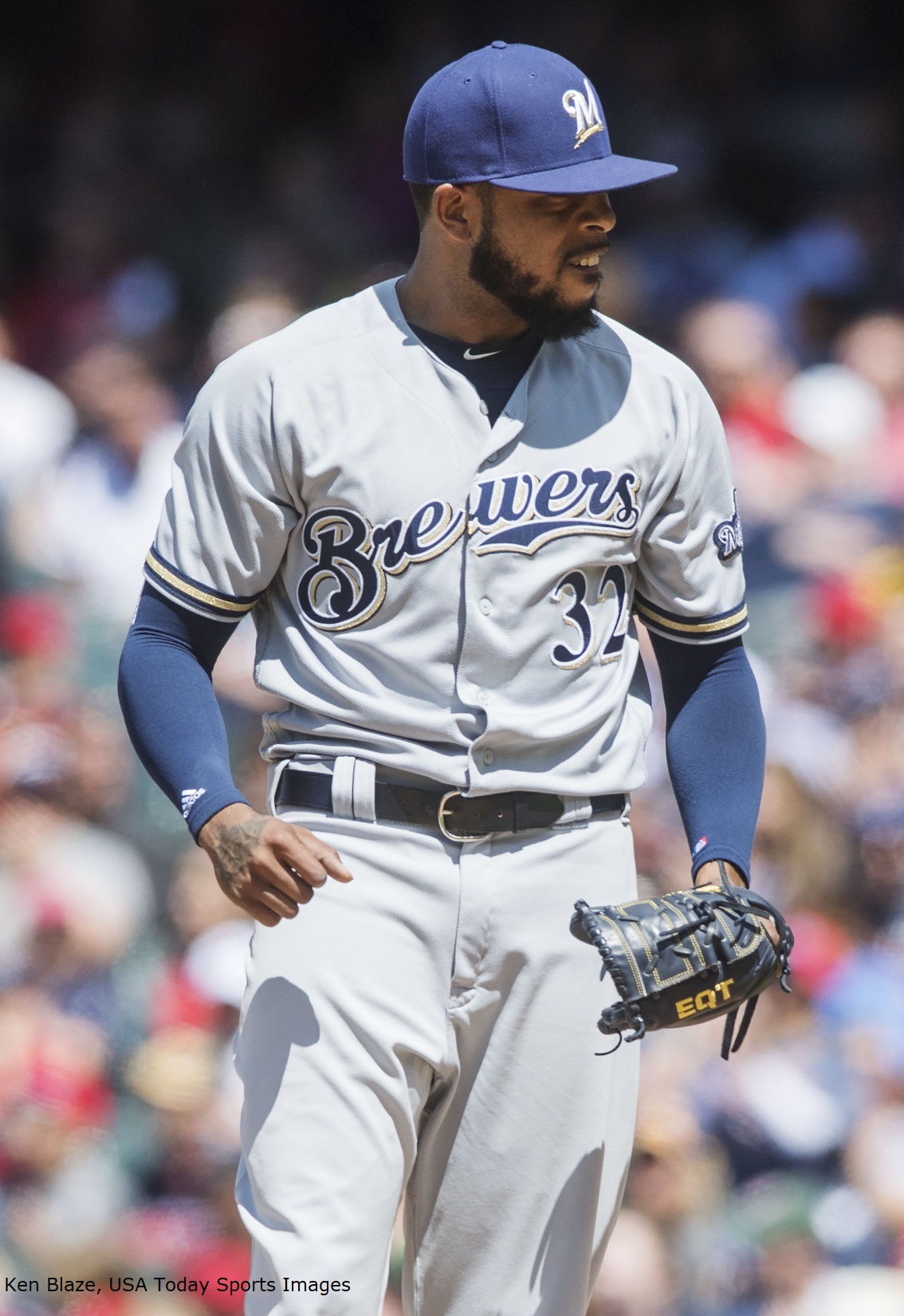Anyone following this Brewers team knows that the bullpen has been the driving force behind the team’s success. The Brewers have the National League’s best record, and their offense is a solid but unspectacular sixth in OPS, while their starter ERA of 4.04 ranks eighth. The bullpen ERA, though, is second only to Arizona. This enables them to win close games, and their 15-6 record in one-run games is a testament to the value of a good bullpen. But as we are not even halfway through the season, whether the team can keep this up is an open question.
Bullpen management has obviously changed a great in the last twenty years, so it’s no surprise that good teams are relying more heavily on relievers than they have at other points in baseball history. Starting pitchers are throwing fewer innings, and they are being replaced earlier in games with a parade of hard-throwing relievers. Front offices are now manipulating their rosters to make more and more relievers available, as the 10-day DL and the increasing reliance on club-controlled pitchers allows GMs to shuttle relievers back-and-forth between the minor and major leagues.
Until the 1980s, no team had made the playoffs with a starting rotation that averaged fewer than six innings pitched. Last year, though, only the Nationals had a rotation that averaged precisely 6.0 innings per start. Baseball is obviously changing.
This year, though, the Brewers are trying to take that to the extreme. They are currently averaging 5.2 innings per start, which is the seventh-lowest in all of baseball. No team in the history of baseball has ever made the playoffs with that short an average start. It is worth noting, however, that the two teams directly behind the Brewers in average start length are the Dodgers and Giants, both of whom would consider themselves to be in a playoff race. Injuries have forced those teams to rely on their bullpens, though; Clayton Kershaw, Madison Bumgarner, Johnny Cueto, Rich Hill, Jeff Samardzija, and Kenta Maeda have all spent time on the disabled list.
It is fair to note that the Brewers remain without Jimmy Nelson and have now lost both Chase Anderson and Zach Davies to the DL at various times. But the Brewers’ five most-used pitchers are about how they would have drawn it up in spring training (albeit in a different order): Jhoulys Chacin, Chase Anderson, Brent Suter, Junior Guerra, and Zach Davies. Milwaukee’s reliance on the bullpen has been a feature rather than a bug. Josh Hader has been stretched into a multiple-inning reliever, and Suter has been available out of the pen a couple times. You have to get all the way down to Corey Knebel and his thirteen appearances before you reach a member of the Brewers’ pen who has averaged less than an inning per outing.
As it is still June, I don’t know if this pattern will continue. Maybe when Nelson comes back and as Anderson and Davies (hopefully) re-establish their health, the Brewers’ starting pitchers will be able to go deeper into games. But as I mentioned above, no team whose starting pitchers averaged 5.2 innings per start has ever made the playoffs. In fact, only the 2016 Dodgers have ever made it averaging even 5.3 innings per start. As the season wears on, the team’s standout relievers may struggle. Josh Hader, Matt Albers, and Jeremy Jeffress may tire as they get called upon more and more.
Of course, the relievers may be totally fine as well. There are reasons for optimism. The aforementioned Davies and Nelson injuries can take pressure off the bullpen if each starter comes back at full strength, and Corey Knebel spent a month on the DL so he may be fresh enough to pick up the slack if/when some of the other relievers start to struggle. I do find it interesting, though, that even if this era of bullpen reliance, no playoff team has ever asked its bullpen to do this much.
Photo Credit: Ken Blaze, USA Today Sports Images
